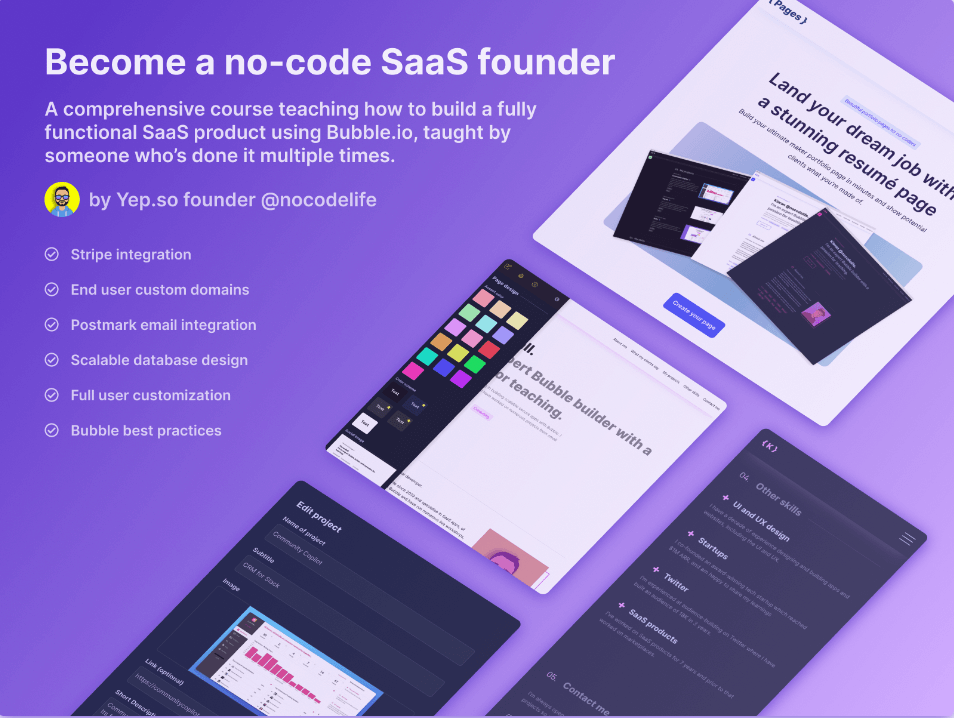Kieran Bell is a founder specializing in teaching people how to use the no-code software Bubble. In this interview Kieran shares why he is so passionate about founders using Bubble to make SaaS apps and his tips for making a successful course.
So why is it worth learning Bubble?
I spent a decade of my life immersed in startup and indiehacking content - books, podcasts, YouTube, Indiehackers - you name it, I was consuming it. Obviously I desperately wanted to be able to code and tried learning numerous times but could never make it stick.
When I discovered Bubble in late 2019 it instantly clicked. I was able to build a pretty complete SaaS product within my first couple of months using it, which is insane when you think about it!
To go from not being able to build anything beyond a simple HTML landing page to building a fully functional software product was huge.
Since then I’ve been obsessed with building SaaS products with Bubble. Partly because I enjoy it, partly because I’m a slave to that sweet MRR, but also because I want to show others what’s possible.
Although building with no-code comes with platform risk, I believe the benefits in terms of shipping fast outweigh it, at least in the early stages. And if I ever get to a point where my SaaS is successful enough that the risk becomes too great, at least I’ll have a crystal clear scope to give to a dev agency!
What’s your tips and tricks for Bubble?
Find an app idea you’re passionate about, or offer to make one for someone you don’t want to let down, and then learn as you build. Use the Bubble forum and Bubble manual. Google is your friend.



